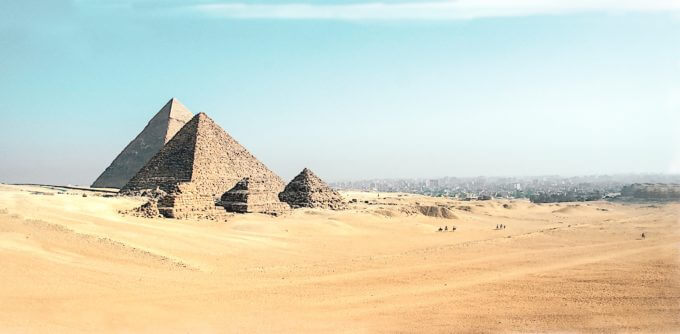Messianic Aspects of the Passover
The story of the Exodus from Egyptian slavery is the story of REDEMPTION and SALVATION. If you want to understand how G-od works the work of Salvation you must understand the Exodus story. The Feast of Passover is a feast given for Remembrance. I have come all the way from Jerusalem to help you remember what G-od has done and what G-od will do for you as people.
In all Jewish Communities around the world – people celebrate this feast of REDEMPTION and SALVATION. It is true that they do not celebrate it exactly like they did in Biblical times. Now they still east Matzoth (unleavened bread for eight days – and they still speak of the Exodus to their children, and they still eat the Bitter Herbs, as commanded in Exodus 12: 8, “And they shall eat the meat in that night, roast with fire, and unleavened bread; and with bitter herbs they shall eat it.”
Like all the Jewish holidays the Passover has elements that coordinate it with the natural cycle in the Middle East, and with Israelite History, and with the Hebrew Religious Development. For us as Messianic believer Passover is the fundamental symbol of G-od’s grace and redemption. “Salvation” imagery in the New Testament is taken directly from the Passover tradition in Judaism.
Things like, the *Lamb of G-od, *Baptism, *Communion, *The devil being cast into a sea of fire, themes like, “*from darkness into light,” “*from slavery into freedom,” “*deliverance from oppression,” “*the grace of G-od for sinners,” and “*G-od’s provision in time of need,” are all taken from the story of the Exodus. This is the reason that it is important for messianic believers and Christians to re-study the Passover and it’s validity today for both communities. The object of this teaching is not to have Christians put under some obligation to celebrate the feast of Passover, but to have the Christians and the Messianic believers rediscover the richness of the Glory of G-od in the Past and receive it for the future.
I. The composite nature of Biblical Jewish Holidays
- The major Biblical Jewish Holidays, like the rest of G-od’s word, are coordinated with both natural, cosmic, historical and religious significance.
- The period of the Passover is the beginning of spring in the Middle East. Winter is over and life begins for nature. The agricultural cycle begins and the first harvest of wheat starts.
- The Passover is always at the full moon and in the period when the sun is right on the meridian.
- Historically Passover is a celebration of G-od’s deliverance of Israel from 400 years of Egyptian bondage. This deliverance is a celebration of the power of G-od over Egypt and the Egyptian G-ods. It is also a celebration of G-od’s faithfulness to His promises.
- The Passover becomes a religious feast with all the above elements and with the element of victory over the forces of evil that rule the world. Passover becomes the starting point of the cultic cycle of Israel’s calendar.
- Putting all of the above elements together Passover becomes a very powerful event in the life of the Jew and in the life of the Christian, because the Christian has taken, hopefully, the identity of Israel by worshipping the G-od of Israel.
II. Isaiah 51:9-11
“(9) Awake, awake, put on strength, O arm of the Lor-d; awake, as in the ancient days, in the generations of old. Art thou not it that hath cut Rahab, and wounded the dragon? (10) Art thou not it which hath dried the sea, the waters of the great deep; that hath made the depths of the sea a way for the ransomed to pass over? (11) Therefore the redeemed of the Lor-d shall return, and come with singing unto Zion; and everlasting joy shall be upon their head: they shall obtain gladness and joy; and sorrow and mourning shall flee away.”
- In this text from Isaiah we see the coordination of the Passover elements with the end time salvation. The passage also bring into play elements already found in the song of Moses from Exodus 15 that incorporate the mythical, cultic, elements into the historical even. That is the victory of the Lor-d on Rahab and Tanin, which are understood by all to mean the primeval monster of the deep that war against the Lor-d.
- The importance of this text is to show that already in the eighth century BC there was a messianic interpretation of the Exodus story and that the spirituallization of the historic event has a solid Biblical ground. This passage has already many parallels in the Psalms, which shows that the concept of an eschatological Passover is not a Hellenistic New Testament element.
III. The Messiah is our Passover: A step forward from Isaiah 51
1COR 5:7 – “Purge out therefore the old leaven, that ye may be a new lump, as ye are unleavened. For even Christ our Passover is sacrificed for us:”
EXOD 12:11 – “and thus shall ye eat it; with your loins girded, your shoes on your feet, and your staff in your hand; and ye shall eat it in haste: it is the Lor-d’s Passover:”
EXOD 12:21 – “Then Moses called for all the elders of Israel, and said unto them, Draw out and take you a lamb according to your families, and kill the Passover.”
EXOD 12:27 – “That ye shall say, It is the sacrifice of the Lor-d’s Passover, who passed over the houses of the children of Israel in Egypt, when he smote the Egyptians, and delivered our houses. And the people bowed the head and worshipped.”

